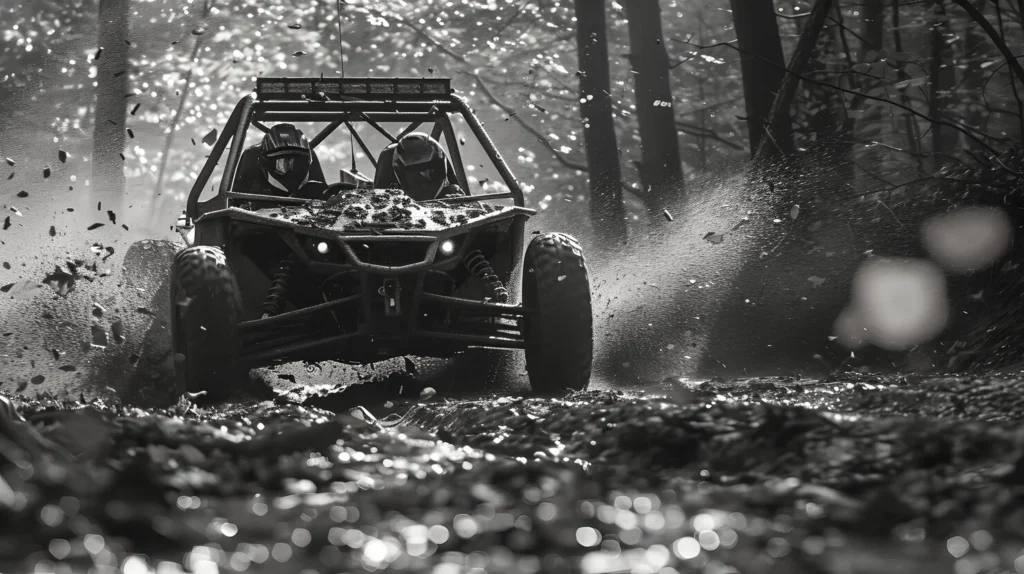Exploring the outdoors in winter is a different kind of magic. The clouds and the sun were mostly gone by the time we began riding, but the air was cold and fresh, the snow sparkled, and there was great peace in the quiet of winter for ATV riding. But riding through the snow takes more than just some good old-fashioned chutzpah; it also demands knowledge and preparation. If you are an ATV lover and want to explore the winter wilderness, there are a few essential guidelines to remember to ensure you have a great time and stay safe. Today, we’re sharing helpful information about riding your ATV in the snow and getting the most out of winter adventures.
How to Ride an ATV in the Snow
Riding ATVs in the snow is different from riding regular ATVs. Snow can change the dynamics of your ATV’s behaviour, and you must change how you ride. You may face soft, powdery snow or hard-packed, slippery snow surfaces, each with its technique. Before you head out, knowing what snow does to your ride is essential.
That was what traction was like on snow. ATV tyres are meant for gripping solid ground, while snow offers a slick surface that can cause control problems if not navigated correctly. Learning to ride your ATV in the snow is about working with these changes and adjusting your riding style to be as safe and fun as possible.
Prep your ATV for winter riding
The right gear can make or break an ATV’s riding experience in the snow. Also, consider purchasing snow or studded tyres, which are made to have better traction in snow and ice. Most standard ATV tyres can handle light snow but struggle in slippery conditions or deep snow. Snow tyres have bigger treads for increased traction, making rides less bumpy.
You’ll also want to bring a winch and some rope when you get stuck. Snow-covered land can be unpredictable, and you never know when a winch can help tug you out of deep powder or a sticky situation. Additionally, cold weather scenarios also demand the use of protective equipment. Wear warm but flexible clothing; don’t have any gear that gets in the way of controlling the ATV. Helmets, goggles, and gloves keep you safe and comfortable. And don’t forget, snow is an excellent reflector in bright sunlight, so goggles also protect you from snow glare.
Learning the Ways of the Road
When driving an ATV in snow, you must master a slightly different technique because it can not be ridden like it is hot. Snow and ice are less forgiving than dirt trails, so the proper methods can also avoid accidents. Throttle control is one thing, among many, to which to pay the most attention. Actuating the throttle as smoothly and progressively as possible is essential when looking for traction in the snow. Refraining from too much acceleration would be best because your ATV may spin out. Instead, ease the throttle on steadily to keep things under control, rather than a sudden burst that could easily cause a skid.
Brakes are another area where you have to be careful. Braking suddenly in the snow can cause your ATV to skid. The way to handle things isn’t to slam on the brakes; instead, apply steady, light pressure to slow down. The reward comes in being proactive rather than reactive about the need to slow down, so get ahead ten steps ahead.
Slow down and lean into turns to avoid wiping out. With snow and ice, getting traction is more challenging for your ATV’s tyres, so you could spin out of control if you go too fast around a corner. A smooth, cautious turnover will help you keep from sliding off course.
How to ski in different snow conditions
The snow is inconsistent, and the type of snow you find can make a HUGE difference in how you need to ride. Knowing these snow conditions will give you a great idea of what will come. New snow is a thrill for ATV riders! But powder can also be tough to navigate — you have less traction, and it’s harder to control your ATV. Keep your speed under control, not too slow, but steady, when you’re in deep snow. It’s all about keeping the momentum up because if you stop or slow down too much, you’ll get bogged down.
Hard-packed snow, however, provides better traction than powder but can still be slippery, particularly when icy. Modulate your throttle and braking, or you will slide out on this stuff. Ice is the most dangerous snow condition for anyone riding an ATV. A ride on ice can become one on glass, so it is critical to slow down considerably. If ice is exceptionally thick, studded tyres with metal studs can provide better grip, but stroll regardless.
Safe ATV Snow Riding
First and foremost, you will want to stay safe; that is always the top priority in anything you do, particularly when you are out snow ATV riding. Such factors as the cold or slippery surfaces and the danger of getting lost make safety measures even more important in the winter. Before going out, it is always a good idea to check the weather and be prepared for unexpected changes. ATVs and deep snow, especially when it’s blowing and visibility is low, don’t mix well, so avoid conditions suitable for winter ATV riding.
Staying close to home or areas you know well is essential when riding in snow-covered landscapes. If you’re a snow-shy newcomer to winter ATV riding, you may want to stick to well-trafficked trails or other places that other riders commonly frequent. Riding solo can become dangerous, especially during the snow season, so ride with a buddy whenever possible. Having another person nearby can be a lifesaver if something goes wrong. Riding through the snow on an ATV can be a lonely experience, so be safe and take a friend with you instead of venturing out alone.
Winter conditions can be brutal, and learning when to call it a day is as vital as learning how to ride. Do not try to be a daredevil on your ATV or perform unsafe stunts—know the boundaries of your vehicle and yourself. It’s always safer to cut a ride short than to keep at it in an uncomfortable or unfriendly setting, subject to bad weather or any other scenario that puts you at unnecessary risk.
Embrace the Adventure
To enjoy snow sports to the max, try riding your ATV in the snow and hiking through the silence and serenity of the snow-covered trees and across literally the top of the world, the wind at your back and pure freedom at your feet, a feeling that you’ll never forget. But to make the most of winter ATV riding, you must be prepared. Run the right tyres and gear on your ATV, learn the skills for snow conditions, and put safety first. So long as you have the proper state of mind and take the necessary precautions, your winter ATV expedition will be one to remember.
Read More: How to Extend the Life of Your Roof






